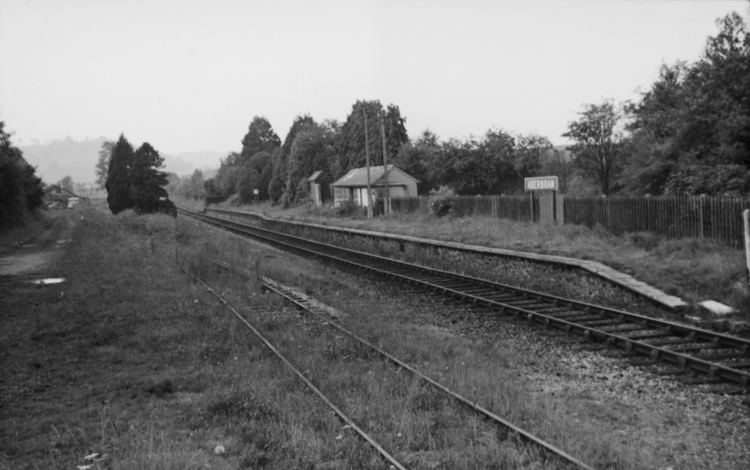 | ||
The Neath and Brecon Railway linked the Vale of Neath Railway at Neath with the Brecon and Merthyr Railway at Brecon and also via a connection from Colbren Junction, it linked to the Swansea Vale Railway at Ynysygeinon Junction (sometimes spelt Ynisygeinon).
Contents
The southern section from Onllwyn to Neath is still open to goods traffic, although passenger services ceased from October 1962 and the northern section was closed completely
Route
The railway was authorised by an Act of Parliament on 29 July 1862 as the Dulas Valley Mineral Railway to transport coal from the Dulais Valley to Neath. It was promoted and constructed by the contractor John Dickson. After being authorised to extend the railway to Brecon, it changed its name to the Neath and Brecon Railway. The railway linked itself to the Swansea Vale Railway by promoting the Swansea Vale and Neath and Brecon Junction Railway. This line had a long gestation period due to Dickson's bankruptcy but eventually when it was opened it gave the Neath and Brecon access to Swansea via running rights. In return, the Neath and Brecon gave full running rights over its system to the Swansea Vale Railway. The Neath and Brecon started operating a passenger service between Brecon and Swansea using these running rights.
An early and unsuccessful purchaser of the new Fairlie locomotive, when in 1863 the railway reached Crynant, coal mining quickly expanded. At Crynant several new mines were opened including the Crynant colliery, Brynteg colliery in 1904, Llwynon colliery in 1905, Dillwyn colliery, and Cefn Coed colliery 1930. These mines led to the expansion of the village.
Brecon
When the railway reached Brecon in 1867, it provided access to the Brecon and Merthyr Railway, the Mid Wales Railway, and the Hereford, Hay and Brecon Railway which were all completed about this time. The initial B&M station at Brecon was at the Watton and the Mid Wales Railway had a station at Mount Street. The Hereford, Hay and Brecon, after belonging to the empire of Savin (originally a draper from Oswestry who became a railway contractor, promoter and operator), was leased and then taken over by the Midland Railway who, by using running powers over the Mid Wales from Three Cocks Junction, gained access to Brecon.
The Midland then leased the Swansea Vale Company's line from around 1874 and in so doing obtained the use of the SVR's running powers over the N&B. This enabled them start running trains from Brecon to Swansea. At around the same time the N&B abandoned its Brecon – Swansea service and decided to lease its main line north of Colbren to the Midland in return for an annual fee. This situation remained in force until around 1930 when the LMS (the 1923 successor to the Midland) decided to abandon its through Swansea Brecon services when the N&B line (then part of the Great Western Railway) was taken back by its owners and rather than being a through route, reverted to being something of a backwater.
The three companies providing services to Brecon consolidated their stations at a newly rebuilt Free Street Joint Station from 1871.
Gradual winding down
In October 1962, all passenger services were withdrawn from Neath to Brecon, leaving only freight services. The line north of Craig y Nos/Penwyllt station closed to Brecon on closure of Brecon station, and remained open south until 1977 to serve the adjacent quarry. The line remains open to Onllwyn, with Celtic Energy using the coal washing plant there through partnership with DB Cargo UK. Some of the old Celtic Energy wagons are now housed at the Foxfield Light Railway.
